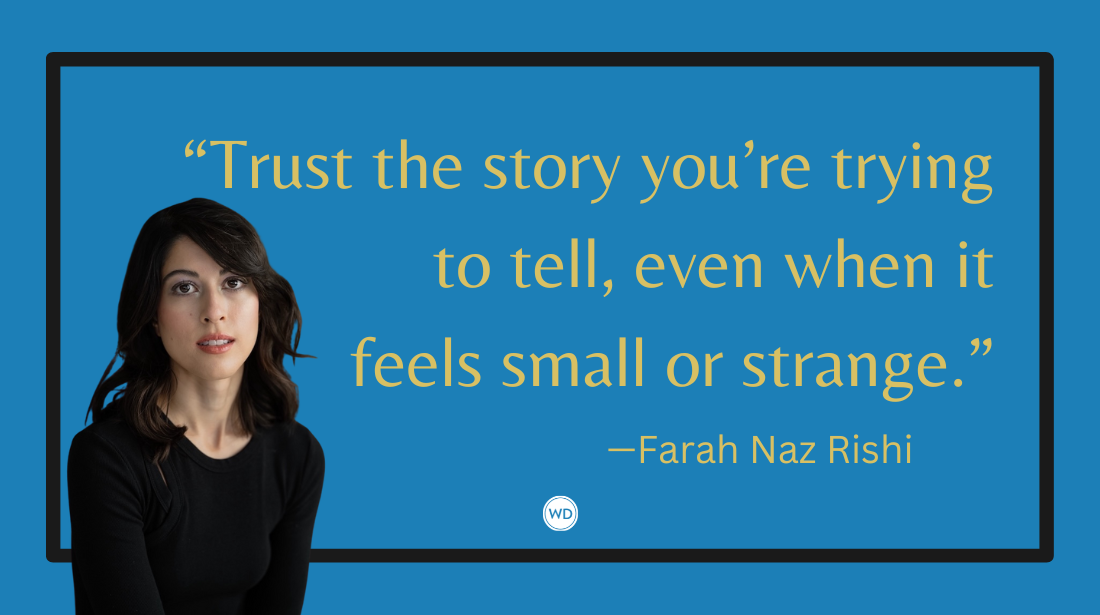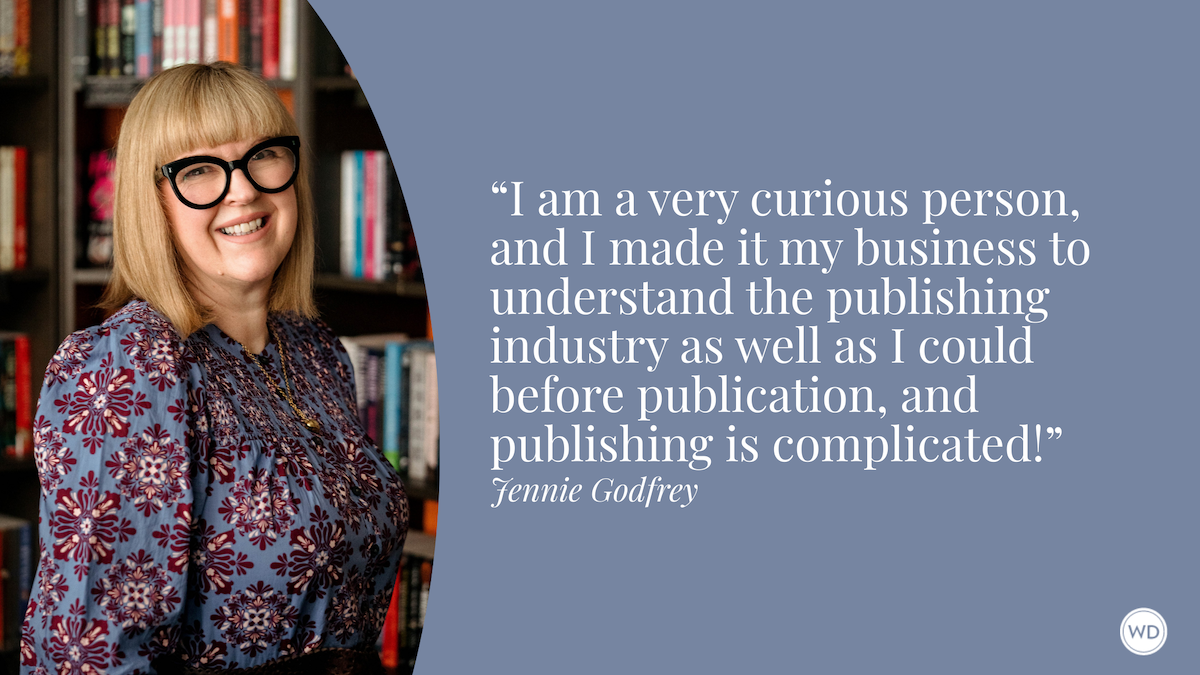Endless Horizons: 10 Novels That Embody the Midwest
Author Alyssa Villaire shares her top 10 novels that embody the Midwest, from Winesburg, Ohio, to Station Eleven.
Many Midwestern tales focus on the hardship and loneliness of day-to-day life in vast landscapes. In my debut novel The Glittering Edge, the protagonist Penny contemplates how, despite the wide skies and seemingly endless open space, life in small-town Indiana can feel suffocating.
But when you read other books set in the Midwest, the region starts to look different. It is, in fact, so multifaceted that it’s difficult to define. In an interview with The National Book Review, author Mark Athitakis described the Midwest as “our great unfinished place.” While it can seem homogenous, it’s full of culture clashes that may or may not define the future of our entire country. Meanwhile, in books, writers have described the Midwest as a land of agriculture and industry, a suburban purgatory, or a place where silver skyscrapers meet a leaden sky. And they’re all correct.
What ties the Midwest together is what the region has often symbolized: opportunity and hope. The Midwest has offered safety and a new beginning for many. Because of its open spaces, diverse landscapes, and (relatively) affordable cost-of-living, the Midwest offers a canvas on which to paint your own fate—even if it takes a herculean amount of effort. The hero’s journeys of the Midwest are not playing out on a grand scale, but emotionally; these stories feel monumental. In this way, the Midwest is the perfect setting for a novel, and it’s why I chose to set my own book in my home state of Indiana.
Here are 10 books that embody the relentless, complicated hope that can be found across the Midwest.
Winesburg, Ohio, by Sherwood Anderson
(WD uses affiliate links)
Anderson’s iconic short story collection presents a cast of “grotesques” (the author’s own term for his characters) who are desperate for connection and growth, even if they don’t always find it. This book doesn’t romanticize small-town life; instead, desperation is the underlying theme. The people of Winesberg want to connect, to realize ambitions, to overcome their fears. Most of the time, they remain stuck on their hamster wheels.
When reading this for the first time in high school, I identified deeply with the dreaming and devastation in these pages. While the emotions the characters feel are universal, the struggle between modernity and tradition is deeply Midwestern. You drive through many small towns today and you’ll see overgrown railroad tracks and empty manufacturing plants that once represented technological advancement and the prosperity of the region. Now, they’re nothing more than a symbol of what was, but the hope that this prosperity could return has never fully gone away. In reading this collection you’ll understand why George, the character who ties Anderson’s stories together, empathizes with the people of Winesberg even as he’s preparing to leave them behind.
Little House in the Big Woods, by Laura Ingalls Wilder
When I was young, the thought of living in a cabin in the woods with my family was romantic. I used to imagine myself in homespun dresses as I gathered leaves in my family’s backyard to make soups and potions, and when the sun went down, I’d hang sheets from the living room furniture to pretend I was camping in the wilderness, listening for the sound of animals beyond my small, safe shelter.
This is how it feels to read Little House in the Big Woods. When people think of Midwestern historical novels, this is the first one that usually comes to mind, and for good reason. This is the first book in the Little House on the Prairie series, full of tales based on the author’s own life growing up in Wisconsin and Minnesota in the late nineteenth century. Quiet and cozy, this is a book that can be read in childhood and adulthood. As you read the series, the poverty and difficulty of the Ingalls’ circumstances become apparent. There are moments of joy and a focus on nature and living by the seasons, but Laura’s life in later books presents challenges that live alongside dreams of something better for her entire family—dreams that she eventually achieved with the success of her novels.
Bone Gap, by Laura Ruby
Bone Gap tells the story of brothers Finn and Sean and Polish immigrant Roza, whose kidnapping from rural Illinois is quickly written off by the people of their small town as a willing escape. The sense of foreboding in this speculative novel is as deeply felt in the corn fields—which, as Finn’s best friend notes, are terrifying even without any serial killers hiding between the stalks—as in conversations with the townspeople, who live in figurative time loops. The struggle to break free from circumstances you didn’t choose is a theme, with Sean abandoning his dreams of medical school to provide for Finn after their mother leaves town. Sean’s struggle mirrors Roza’s as she tries to escape from her kidnapper’s house, where the neighbors never quite see her waving wildly from the windows. You get the sense that you know every character in this novel, but you quickly realize you don’t know any of them at all. That doesn’t keep you from rooting for them.
Gilead, by Marilynne Robinson
In the 1950s, Reverand Ames falls ill, and he realizes that he won’t see his young son grow up. He decides to write a letter as a way for his son to know him after he’s gone, and that letter is Gilead, named for the fictional Iowa town where the characters live.
Gilead is quiet and contemplative, telling the story of the Reverend and his family going back two generations. But when the story expands to include Jack, the son of Reverand Ames’ best friend, you learn what the town symbolizes: hope. Jack has come to Gilead for salvation and a fresh start with his common-law wife, who is Black. Instead, he’s met with loneliness and prejudice. Many moments in this book are hopeful and introspective; Reverand Ames spends many pages contemplating spirituality and his capacity to forgive. But for Jack (and, if you continue with the series, several other characters), there’s a gap between what Gilead represents and what it actually offers.
Little Fires Everywhere, by Celeste Ng
In an orderly Ohio town, visual artist Mia and her teenage daughter Pearl rent a home from the buttoned-up, sensible Richardson family. Months later, Mia and Pearl are gone, and the Richardsons’ youngest daughter burns down her family’s house. Little Fires Everywhere follows this unraveling, throwing you into the middle of class and racial divides in a suburban town.
This book doesn’t shy away from complexity. As the characters clash, you see the impacts of change on the tightly-controlled but diverse town of Shaker Heights (the actual hometown of author Celeste Ng). While Richardson matriarch Elena is obsessed with the rules imposed by society, Mia’s life is fluid, defined only by her own sense of right and wrong. Elena, naturally, sees this as a threat. To exact her revenge, Elena becomes determined to uncover Mia’s secrets and expose her for what she must surely be—unhappy and immoral. Mia and Elena represent a very specific tension in the Midwest: the push and pull of old institutions and a new way of being. Mia moved to Ohio to start over, but Elena literally ensures that Mia’s past follows her. And, like the bureaucracy of Shaker Heights, Elena is brutally efficient.
Turtles All the Way Down, by John Green
John Green’s 2017 novel doesn’t romanticize Indianapolis. There are Chuck E. Cheeses and strip malls and long drives with friends. There are also stark class divides, with pockets of intense wealth in towns that are otherwise lower-middle class. The protagonist, Aza, suffers from obsessive compulsive disorder, and the way Green places you directly into Aza’s thought spirals is intense and deeply empathetic. When Aza’s relationships become strained, her OCD intensifies. But this is, ultimately, a hopeful story about recovery, and the setting veers from cozy to isolating as Aza figures out how to manage her OCD—and, ultimately, as she learns not to be afraid of the future.
Firekeeper's Daughter, by Angeline Boulley
Boulley’s novel is a murder mystery, a story of community and identity, and absolutely impossible to put down. The book centers on members of the Ojibwe community on and around Sugar Island in northern Michigan. The Great Lakes region is culturally distinct from the rest of the Midwest, and Boulley’s book offers a glimpse into maritime traditions and the lives of the Ojibwe as they continue to struggle with the impacts of centuries-old colonialism and prejudice. The story is told through Daunis, a half Ojibwe, half white teenager who works to reconcile her mixed heritage as she encounters people who want her to choose a single identity. Daunis lives through horrific events—read the content warnings before picking this one up—but she is relentless in her push for justice for herself, her friends, and her community.
Dandelion Wine, by Ray Bradbury
Dandelion Wine is full of vignettes that capture the lush magic of Midwestern summers. Written from the perspective of a fictionalized version of himself as a twelve-year-old, Bradbury taps into childlike imagination and wonder in a way that is pure and unguarded. His introduction to the book reveals that many of these stories originated from dreams mixed with memories, and you can feel it on every page. The book certainly romanticizes the Midwest, but not in a way that does it a disservice. Bradbury reminds us how children see the world, and through this lens, rural Illinois feels vast and full of magic.
You Should See Me in a Crown, by Leah Johnson
A joyful, honest young adult novel about being queer and Black in suburban Indiana, You Should See Me in a Crown is an unflinching examination of prejudice and a joyful rallying cry. The protagonist Liz faces pressure to conform from her wealthy, mostly white community. It can be challenging to evolve when everyone around you sees you as the person you used to be, but Liz meets that challenge head-on when she decides to run for prom queen to win a scholarship–and ends up falling for a fellow prom queen contender in the process.
Station Eleven, by Emily St. John Mandel
In St. John Mandel’s speculative novel, the Great Lakes region provides a backdrop for post-pandemic times, after an illness (not COVID-19) has wiped out most of the population. The story follows an itinerant theater troupe called The Traveling Symphony, because while there’s no running water or electricity, there’s still art.
The world of this book doesn’t feel so far off from the present reality in certain parts of the Midwest. Even now, we see nature reclaiming it. In Cairo, Illinois and parts of Detroit, it isn’t uncommon to see plants snaking over the ruins of old homes and abandoned shopping malls. The remaining signs of life are big box stores, chain restaurants—and art, of course. Because creativity finds its way into empty places. While this is a novel set in the future, I think there’s something to be said for the way the Midwest becomes St. John Mandel’s setting for the reimagining and eventual rebirth of civilization.









